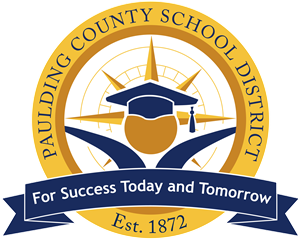- Paulding County School District
- Planning For The Future
- Position Statement and Zoning Impact Statements / Votes
-
Paulding County School District
Planning and Zoning Commission
POSITION STATEMENT

As a community, Paulding County is experiencing significant residential development growth that impacts several domains of infrastructure and services. Applications for residential developments can affect several areas, including water, wastewater, solid waste, stormwater, and transportation. Until recently, one domain that typically had not been included when considering the impact of new development is the Paulding County School District (PCSD). New development critically impacts funding, enrollment, and services for the additional students a new development eventually will bring into school buildings. The current student yield per household is .664, which equals almost two new students for every three houses developed.
The Paulding County School District is a financial steward for its schools, and staffing and services for each school are allocated based on current student enrollment. The addition of just one student, even in a school that has growth capacity remaining, can still make a considerable impact on both the school and school district operations. The impact of development on the school district should be a major consideration in the approval process. The Paulding County Planning and Zoning Commission, an advisory panel to the Paulding County Board of Commissioners that reviews and makes recommendations regarding new development proposals, recently expanded to grant the school district one voting seat on the panel. Development impacts to the school district and its schools, in all capacities, are now being reviewed for all applications and agenda items presented to the Planning and Zoning Commission.
As one of the fastest growing school districts in Georgia, the Paulding County School District’s budget is impacted currently by an imbalance of residential to commercial development. Only 14 percent of Paulding County’s tax digest is non-residential compared to an average non-residential tax digest of 35 percent for other counties with large school districts. This imbalance requires the school district to rely on other sources such as state funding, federal funding, and grant funding, all of which are highly susceptible to changes in funding mechanisms. The Paulding County School District has experienced austerity cuts in state funding and has atypical percentages of federal funding (such as Title I and Free/Reduced Lunch) compared to other low-wealth districts.
Because Paulding County has relatively low tax rates and excellent schools, it is an attractive location for young families and, therefore, housing demand is high. The demand means that some schools will see enrollment stretch beyond building capacity until new seats become available. In fact, some schools are already above capacity, and we anticipate more than 14 schools will experience critical operational and instructional impacts due to overcrowding within the next few years.
New schools and new classrooms must be constructed to meet the enrollment demands, and in the current economic market new construction is extremely expensive. New residential construction generates property tax revenue that, when combined with state funding, supports daily operating costs for the students that the new development puts into already existing schools. But that property tax revenue does not support the cost of building new classrooms or new schools. The school district’s E-SPLOST helps with capital needs, but as mentioned, PCSD’s E-SPLOST does not generate the same funding as in other counties where there are larger commercial and retail bases. Additionally, because much of the school district’s prior construction projects were funded with bonds, a large percentage of the current E-SPLOST revenue is being used to retire debt from years ago. Using E-SPLOST funds to pay off prior debt helps reduce property taxes but provides no assistance for constructing new classrooms and schools.
Finally, the same labor shortage that is impacting industries nationwide is also limiting PCSD’s ability to hire new teachers, bus drivers and transportation staff, cafeteria managers, and custodial staff. New residential development increases school enrollment which in turn requires additional instructional and support staff. In the current labor market, these employees simply are not available. Therefore, even in attendance zones wher
e classroom space is available, additional key service staff may not be. Adding new students in this environment would require the school district to stress and stretch available resources and essential services. Just last year, critical staffing shortages forced the school district to cut back the number of in-person instructional days for high school students.
Because new residential developments have such a significant impact on the school district and its ability to provide services for all students, it is imperative that approving agencies at both the local and state levels scrutinize these projects with the same comprehensive thoroughness that they give to infrastructure projects. In turn, the Paulding County School District will commit to the same level of scrutiny that we ask of all our partners.
-
IMPACT STATEMENTS

